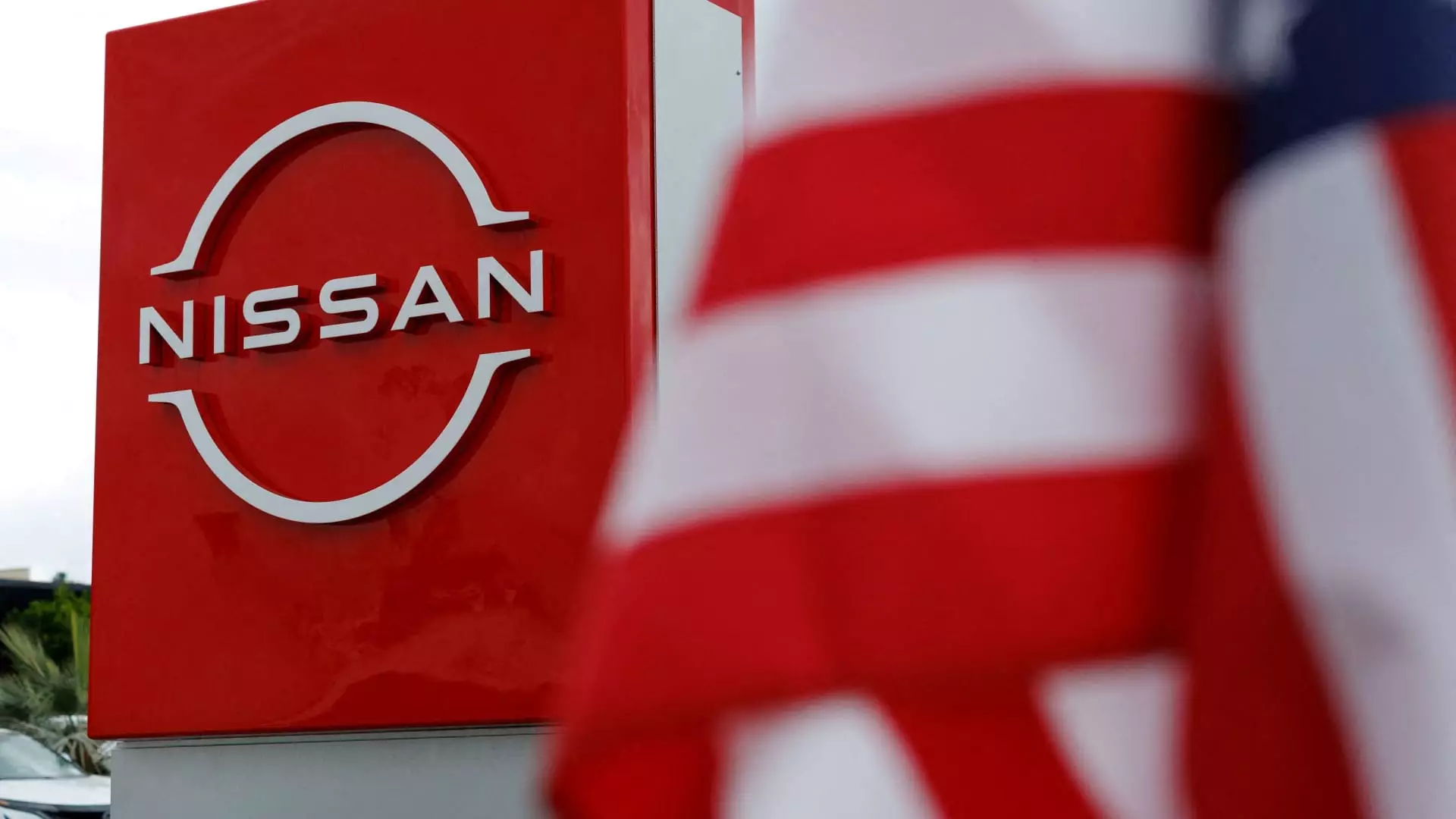As the automotive industry grapples with unprecedented policy challenges, Nissan Motor Co. finds itself at a crossroads. With Donald Trump’s controversial auto tariffs in effect, Nissan’s new Americas chief, Christian Meunier, is on a mission to maximize production efficiency at their sprawling Smyrna, Tennessee plant. This institution, once the crown jewel of Nissan’s American operations, now stands at the forefront of a crucial transition that could define the company’s future success in an increasingly competitive market.
One cannot ignore the irony presented by the tariffs imposed by the current administration; they are ostensibly aimed at fortifying domestic industry, yet they have thrust automakers into a tight spot. For Nissan, the stakes have never been higher. Meunier’s proclamation to “max out” production must be viewed not just as a strategic aspiration, but as a necessary response to pressure stemming from tariffs and shifting market demands.
Capacity versus Capability: The Smyrna Dilemma
The Smyrna facility has a remarkable production capacity of 640,000 vehicles annually, and yet, it only managed to produce around half that number last year. This unutilized capacity raises questions about not only operational efficiency but also how well Nissan has adapted to the mutable landscape of the American automotive market. While Meunier emphasizes the goal of maximizing this output, one must consider the fundamental challenges that come with such aspirations, including labor, supply chain adjustments, and potential product diversification.
Nissan’s current struggle isn’t merely an issue of manufacturing capacity; it speaks to a broader inability to capitalize on existing strengths. As Meunier notes, adaptation takes time. Yet waiting may mean missing opportunities to reclaim lost market share, notably for competitive models like the Nissan Rogue and Frontier. The rapid rise of rivals necessitates not only a recovery but rejuvenation, and therein lies Nissan’s challenge.
The Unpredictability of Tariffs: Risk and Reward
Meunier’s candid remarks regarding potential additional tariffs on auto parts are a reflection of a precarious balancing act. While he expresses hope for a reasonable compromise, the reality is that uncertainty breeds anxiety among automakers. For Nissan, higher production costs due to tariffs could deter them from realizing their ambitious production goals. Instead of merely adjusting to existing tariffs, Nissan should advocate for more reasonable trade policies that stabilize the industry, allowing for focused investment and growth.
Ironically, these tariffs are compelling Meunier to look inward and develop products with a higher domestic content. This strategic pivot may play to Nissan’s advantage in establishing a more resilient operation, but it also raises questions about whether leadership can act swiftly enough to mitigate the adverse effects of these policies.
Localization: A Path Forward?
In his discussions, Meunier made a strong case for localization as the cornerstone of Nissan’s adaptation strategy. By expanding production of hybrid vehicles and exploring new product lines, such as an Infiniti model, Nissan is aiming to leverage its existing infrastructure. New models could be the key to re-engaging consumers who may have turned to other automotive brands. However, a reliance on in-house production must also consider the volatile nature of consumer preferences and potential miscalculations in forecasting demand.
Moreover, Nissan’s broader strategy encompasses not just vehicles but also powertrain components, signaling a shift toward comprehensive local production. The idea that automotive manufacturing can be brought closer to end consumers is compelling, yet the execution is fraught with challenges like cost management and workforce education, particularly as technology evolves.
The Competitive Landscape: A Shrinking Market Share
The declining market share of Nissan’s models highlights the urgency of Meunier’s turnaround strategy. Vehicles such as the Frontier have been losing ground, and while recent pricing adjustments are commendable, they ultimately raise concerns about pricing power and brand perception. A significant drop in prices may serve to stimulate demand temporarily, but at what long-term cost? Nissan must strike a balance between competitive pricing and brand integrity.
Given the realignment of Nissan’s operations, the potential for growth remains vast, particularly in the SUV market, where the Rogue has traditionally thrived. Yet, this prospect hinges on Nissan’s ability to unify its production capabilities with innovative sales strategies to reignite consumer interest.
Nissan’s path forward is riddled with complexities typical of our contemporary global economy. While Meunier’s leadership places an emphasis on domestic production and product development, the company’s success fundamentally depends on navigating the turbulent waters created by tariffs, adapting quickly to market conditions, and ultimately reinstilling consumer confidence. The automotive industry is as dynamic as it is unforgiving; Nissan’s ability to adapt will determine whether it thrives or merely survives in the years to come.

